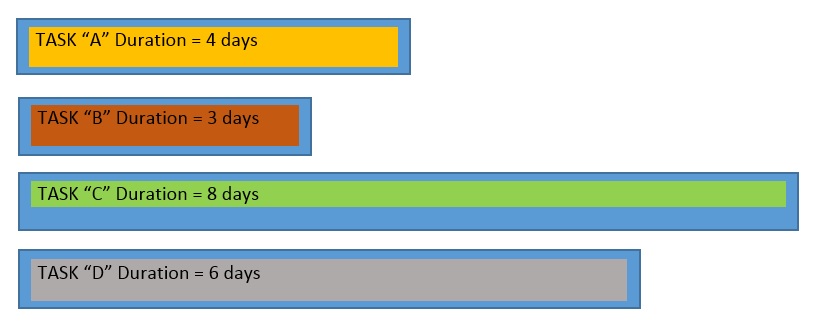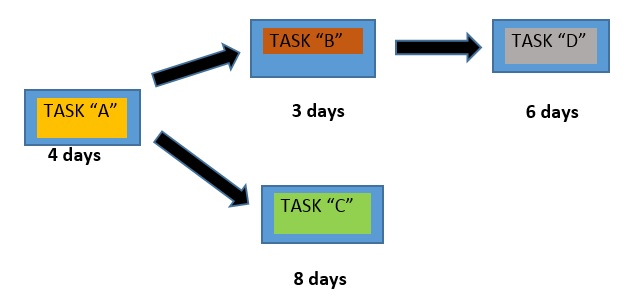When you enter the Project Management world, you often hear people using the term “critical path”. Somebody new to project management would wonder as what critical path could be, why it is critical and to whom.
The success of a project depends not only on successful delivery of the product or service but also on several other factors like delivery of the product or service on time, within budget, with expected quality and so on. Hence, on-time delivery of a project is an important criteria in defining its success; this is when critical path comes into picture.
Critical path in short defines the “total duration of the project”, “shortest time it takes to complete the project” or “the longest path in a project”. Hence, a critical path is the sum of duration of all activities in a project which when delayed would affect the total duration of the project. Now, doesn’t all this make it evident for us as why it is termed as critical?
Let us look at an example here for further understanding. Consider the following 4 different tasks of varying duration.

CASE 1:

Assume Tasks A, B, C and D can only happen sequentially, i.e., output of Task A is input to Task B and output of Task B is input to Task C and so on (A -> B -> C -> D). In this case, the critical path of the project is A -> B -> C -> D and it takes 21 days to complete this project (Sum of duration of Task A, B, C and D)
CASE 2:

Now, let us look into a little different scenario with 2 assumptions. Assume Task B and C can be done in parallel and both of them depend on output of Task A. Also, let us assume Task D depends only on output of Task B. Now the project has 2 paths A, B, D and A, C. Now, we need to determine as which one is the critical path. Path 1 (A, B, D) has a duration of 13 days and Path 2 (A, C) has a duration of 12 days. We all now know that critical path is the “total duration of the project”, “shortest time it takes to complete the project” or “the longest path in a project”. Hence, the critical path in this case is Path 1 (A -> B -> D) with a total duration of 13 days.
Note:
- A project can have several critical paths of the same duration
- Several scheduling tools are available in the market that automatically highlight the critical path once we enter the relationship between tasks
- Generally, deadlines and milestones are created in schedules based on the critical path
In my forthcoming blogs, I will talk more about the concepts of network diagrams, leads and lags, task relationships and dependencies etc.
Interested in how EPMA can help your PMO? Contact us today at 1.888.444.EPMA
Please feel free to leave comments below or check out our other blogs on Microsoft Project, Project Server, SharePoint and Project Management Methodology.

